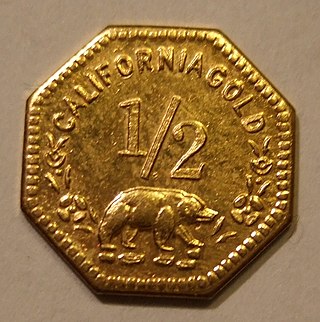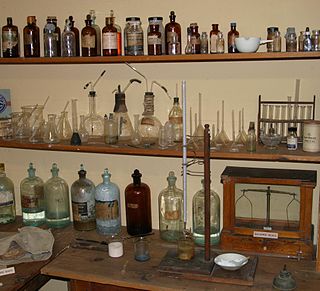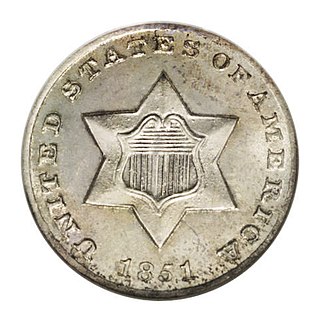
This is an introduction to the postal and philatelic history of Italy.

The Gold Country is a historic region in the northern portion of the U.S. state of California, that is primarily on the western slope of the Sierra Nevada. It is famed for the mineral deposits and gold mines that attracted waves of immigrants, known as the 49ers, during the 1849 California Gold Rush.

The Coinage Act of 1792, passed by the United States Congress on April 2, 1792, created the United States dollar as the country's standard unit of money, established the United States Mint, and regulated the coinage of the United States. This act established the silver dollar as the unit of money in the United States, declared it to be lawful tender, and created a decimal system for U.S. currency.
Ophir is the name of a locality in New South Wales, Australia in Cabonne Shire.

The Denver Mint is a branch of the United States Mint that struck its first coins on February 1, 1906. The mint is still operating and producing coins for circulation, as well as mint sets and commemorative coins. Coins produced at the Denver Mint bear a D mint mark. The Denver Mint is the single largest producer of coins in the world.

The Flowing Hair dollar was the first dollar coin issued by the United States federal government. The coin was minted in 1794 and 1795; its size and weight were based on the Spanish dollar, which was popular in trade throughout the Americas.

Empire Mine State Historic Park is a state-protected mine and park in the Sierra Nevada mountains in Grass Valley, California, U.S. The Empire Mine is on the National Register of Historic Places, a federal Historic District, and a California Historical Landmark. Since 1975 California State Parks has administered and maintained the mine as a historic site. The Empire Mine is "one of the oldest, largest, deepest, longest and richest gold mines in California". Between 1850 and its closure in 1956, the Empire Mine produced 5.8 million ounces of gold, extracted from 367 miles (591 km) of underground passages.

The Charlotte Mint was the first United States branch mint. It was located in Charlotte, North Carolina and specialized in gold coinage.
Agua Fria is an unincorporated community in Mariposa County, California. It is located 5.25 miles (8.4 km) northeast of Catheys Valley, at an elevation of 2001 feet. Agua Fria is the former county seat of Mariposa County located approximately three miles west of Mariposa, California.

Samuel Augustus Merritt was an American politician who served as a California legislator, as a Congressional Delegate from Idaho Territory, and as a judge in Utah Territory.

California gold coinage is a broad category of privately-issued coin-like items that were used in place of official currency in the United States territory of California during the gold rush of 1849. Since the federal government reserves the right to issue legal tender coins, California gold coinage is a misnomer and actually references coin-like ingots with a stated tender value, tokens with a stated tender value (denominated), and tokens without a stated tender value (non-denominated). These items are only classified as an ingot if the value of the metal was close to the tender value marked on the piece. In spite of the misnomer, it is common practice among numismatists to label coin-like ingots and denominated tokens as 'coins' while labeling the non-denominated tokens as 'tokens'. Also, the small California Gold coins and tokens have been made in many locations other than California, often with a claim of being from California on the piece and these items are generally labeled as California Gold Coins or Tokens.

A metallurgical assay is a compositional analysis of an ore, metal, or alloy, usually performed in order to test for purity or quality.
Ridleys Ferry, later Benton Mills, is a former settlement in Mariposa County, California.
Quartzburg is a former settlement in Mariposa County, California. It was located on Burns Creek 2 miles (3.2 km) upstream from Hornitos.
Rancho Las Mariposas was a 44,387-acre (179.63 km2) Mexican land grant in Alta California, located in present-day Mariposa County, California.

James King of William was a crusading San Francisco, California, newspaper editor whose assassination by James P. Casey, a member of the San Francisco Board of Supervisors in 1856 resulted in the establishment of the second San Francisco Vigilance Committee and changed the politics of the city. King was among the first newspapermen to be honored by the California Journalism Hall of Fame.

New South Wales experienced the first gold rush in Australia, a period generally accepted to lie between 1851 and 1880. This period in the history of New South Wales resulted in a rapid growth in the population and significant boost to the economy of the colony of New South Wales. The California Gold Rush three years prior signaled the impacts on society that gold fever would produce, both positive and negative. The New South Wales colonial government concealed the early discoveries, but various factors changed the policy.

The three-cent silver, also known as the three-cent piece in silver or trime, was struck by the Mint of the United States for circulation from 1851 to 1872, and as a proof coin in 1873. Designed by the Mint's chief engraver, James B. Longacre, it circulated well while other silver coinage was being hoarded and melted, but once that problem was addressed, became less used. It was abolished by Congress with the Coinage Act of 1873.

The five Panama–Pacific commemorative coins were produced in connection with the 1915 Panama–Pacific International Exposition in San Francisco. Struck at that city's mint, the issue included round and octagonal $50 pieces. Excepting modern bullion coins, these two gold pieces are the highest denomination ever issued and the largest coins ever struck by the United States Mint. The octagonal $50 piece is the only U.S. coin to be issued that is not round.
The 1851 Humbert $50 gold ingot was an Ingot produced by Moffat and Company, under the direction of Augustus Humbert This "coin", while technically an ingot, was still used and unofficially considered currency. It was also the largest ingot produced during the California Gold Rush, weighing almost 2.5 oz.














